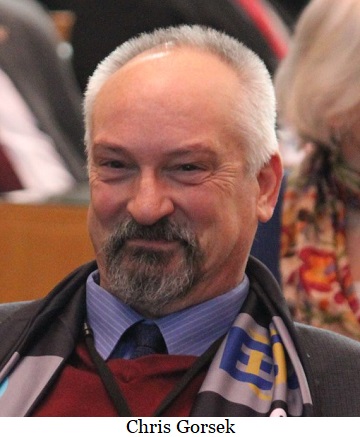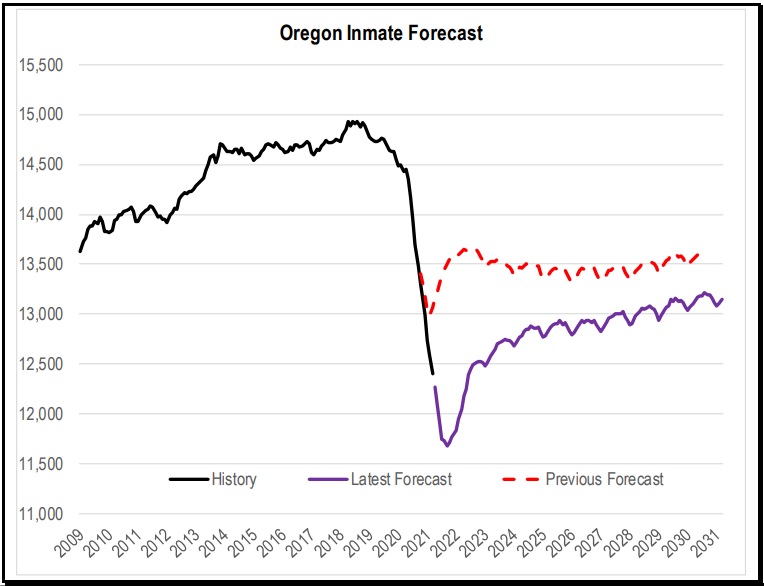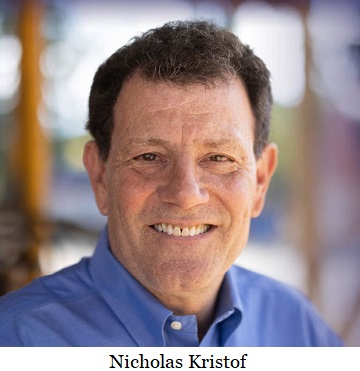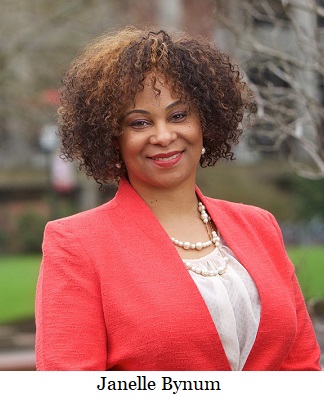
On this day, September 3, 1857, John McLoughlin (b.1784), Hudson's Bay Co. pioneer at Fort Vancouver and in Oregon Country, died in Oregon City. In the late 1840s his general store in Oregon City was famous as the last stop on the Oregon Trail.
 Post an Event
Post an Event
| Benton County Republicans’ Private Fundraising Event, “Bent-on Boots and Bling” with Trey Taylor |
| Friday, September 5, 2025 at 5:00 pm |
| Featuring Trey Taylor
Music Private Event
Friday, September 5, 2025 5:00-5:30 pm VIP Reception
5:30-8:00 pm Heavy Appetizers,
Auction, Concert
Red: $750 VIP Reception
Front Row Table Sponsor
White: $500 Table Sponsor
Blue: $50 per person
Limited Seating. Get Yours Now!!!
Support Local
Dress up: Bling, Cowboy, Patriotic Benton County Republican
FUNDRAISER
www.BentonGOP.org
Get your tickets today at:
https://www.bentongop.org/event-details/benton-county-republicans-fundraiser/form
About Trey:
Trey is the youngest African American Man in Country Music History. The Denver Post wrote
"It's impossible to miss his enthusiasm. With a fondness for cowboy boots, gaudy colors and dazzling jewelry, Trey Taylor could stand toe to toe with any of the Pop, Country or even Rap
contemporaries of his generation.“ |
| Trysting Tree Golf Club, 34028 NE Electric Rd., Corvallis |
This is the latest in an attempt to turn an industry advocate into an environmental group
Secretary of State Shemia Fagan has released an audit of the Oregon Forestry Resources Institute. The Secretary of State has been criticized by many for putting her partisan thumb on the scales and this audit is seen by them as a partisan attack on the industry.
OFRI has been targeted with increasing scrutiny in recent years from a coordinated effort by political interests seeking to abolish or seize control of the forest industry in Oregon. The audit incorrectly characterized OFRI as a government agency rather than what it is: a body funded by private landowner dollars created to educate the public on the responsible management of Oregon’s largest renewable natural resource.
OFRI provides vital services for the forestry industry, just like other commodity commissions. Included in the audit are overreaching recommendations for legislative changes which exceed the appropriate scope of the Secretary of State’s audit function. These include stacking OFRI’s membership with environmentalists that lack knowledge of practical forestry, limiting the number of people with working experience.
“This audit is just another attempt to give a patina of legitimacy to efforts to remake OFRI into another taxpayer-funded environmental advocacy group,†said Senate Republican Leader Fred Girod (R-Lyons). “All one has to do to see through that is read the report. The Secretary of State uses debate around legal language to justify completely reclassifying OFRI as a government agency. That’s simply a power play to get more control over the forest products industry. I will be introducing legislation in the 2022 short session to clarify OFRI’s purpose and ensure that they are treated the same as any other commodities commission. Oregon’s economy depends on a vibrant forestry industry.â€
A D V E R T I S E M E N T

A D V E R T I S E M E N T
“OFRI promotes the responsible management of Oregon’s forests in order to support 50,000 family-wage jobs while reducing the potential for catastrophic wildfires,†added House Republican Leader Christine Drazan (R-Canby). “This audit is another attempt in a coordinated effort by political interests who want to end the timber products industry in Oregon. They are fundamentally opposed to continuing our legacy as a global leader in sustainable forestry practices. This will put more families and communities at risk from unnaturally large wildfires. Turning our backs on our natural environment by neglecting our forests is not an Oregon value. In fact, it’s the worst thing we could do.â€
--Staff Reports| Post Date: 2021-07-21 18:44:08 | Last Update: 2021-07-22 09:52:47 |
Does Oregon have a candidate not easily labeled?
For parents interested in the protection of their children from child sex trafficking, with their concerns about the Oregon public schools and the teachers’ unions, parents may be interested in the breaking news that Nicholas Kristof, a two-time Pulitzer Prize winning journalist with the New York Times, is considering running for governor of Oregon. Parents might want to make a summer reading program out of reading his books. Who is he really?
In 2013 Kristof was named an International Freedom Conductor by the National Underground Railroad Freedom Center for his work exposing human trafficking and linking it to modern slavery.
In a 2021 New York Times essay, Kristof wrote he favors education reform more than teachers’ unions do, although he expressed some of the best states with good public schools were because of their teachers’ unions. Given that Oregon has one of the worst public-school systems in the nation, how will Kristof speak to that in Oregon?
Kristof who is a self-described Progressive, citizens will want to look at who he associates with and what he writes about which can be illuminating as to whether Oregon citizens might consider him to be a good or not good choice for all the citizens of Oregon. Will Kristof bring his international human trafficking journalistic investigation skills to Portland, Oregon? That would be a story worth following.
Kristof’s newest book
Tightrope: Americans Reaching for Hope had one reviewer commenting,

“In short, one has one very good book powerfully evoking the lives of the desperate poor together with a boring book of rather tired and banal policy recommendations that could be pulled verbatim from the Democratic 2020 platform.â€
With President Obama’s book,
The Audacity of Hope, and Bill Clinton’s video
The Man from Hope, some may see Kristof’s book as a kind of strategy for a bigger office as sthe repeat pattern is recognizable as the usual Democratic pattern of the use of hope.
Given that some of Kristof’s focus, his work, his books coincide with President Donald J. Trump’s executive orders and work on child sex trafficking, human trafficking, the working class, and illegal immigration it will be interesting to see how the Democratic National Central Committee reacts to Kristof “considering†a run for governor in Oregon.
Nicholas grew up on a sheep and Cherry farm in Yamhill, Oregon and has been back in Oregon for a few years. Their farm is now a vineyard.
With 38% of Oregonians registered as non-affiliated for voting purposes will the major and minor political parties and candidates do anything different next year to draw those voters to their candidates? Or will the usual playbooks be brought out and repeated?
--Margo Logan| Post Date: 2021-07-20 20:46:43 | Last Update: 2021-07-20 21:31:26 |
For now, at least
The Oregon State Capitol has been closed for 16 months under safety measure against COVID-19. Now, Senate President Peter Courtney and House Speaker Tina Kotek are trying to justify the closure.
“Last March, we consulted with infectious disease doctors and public health officials about what changes were needed to reduce the risk of COVID-19 transmission in the Capitol. In the end, we made the very difficult decision to limit Capitol entry to legislators, essential staff, and members of the press.â€
But what has changed? Last March 31 there were 67 COVID-19 cases and 17 hospitalized. On July 12, the day of their statement, there were 251 cases and 97 hospitalized. Have their experts changed their position after 16 months of viewing other states fairing better with no closures?
They seem to be relying on a vaccine to stop the spread, even though there is developing evidence that the vaccine doesn’t prevent a person from getting COVID-19. Still Senate Courtney and Representative Kotek say: “Over 70% of Oregonians 18 and older are now vaccinated against COVID-19 and community spread has reduced considerably. We are extremely grateful to Oregonians for stepping up to help beat this pandemic. With new guidance from the Oregon Health Authority and the lifting of county risk levels, we are excited to expand entry to the Capitol today to include members of the public.â€
Oregonians are to be congratulated for enduring the lose of life, jobs, homes, and a good education for their children. And please don’t look at us for your lose. “The last year has been extremely hard on our state. Oregonians have suffered devastating wildfires, an ice storm, a historic heatwave, and extreme drought. Through it all, we have battled a global pandemic that has dramatically changed our daily lives,†say Courtney and Kotek.
Due to the ongoing Capitol Accessibility, Maintenance and Safety project, certain areas in the Capitol will continue to be under construction during the coming months. Access to the Senate and House wings will be limited to construction personnel only until December 2021. The State Street entrances and front steps will also be temporarily closed for construction. Visitors can use the North ADA entrances to enter the building.
A D V E R T I S E M E N T

A D V E R T I S E M E N T
The
Oregon State Capitol Visitor Services staff will be bringing back many of the services they provide for visitors over the next few weeks:
- The Capitol Store will be open from 10:00 a.m. until 3:00 p.m. for the next few weeks. Visit their website or Facebook page for updates.
- Capitol tours will be self-guided for the week of July 12th.
- Guided tours will be offered daily at 11:00 a.m. and 2:00 p.m. beginning July 19th. Beginning mid-August, guided tours will be expanded to four tours per day.
- Tower tours will resume in 2022.
With such a promise, and without another ‘emergency’, we can look forward to full access for the 2022 legislative session.
--Donna Bleiler| Post Date: 2021-07-20 18:15:21 | Last Update: 2021-07-20 18:22:58 |
Up to 60 vehicles and 40 tents per site
The City of Eugene has been working on
identifying and creating new, temporary managed homeless zones across the city where people who identify as homeless can park their vehicles or sleep in tents.
The City and Eugene Area Chamber of Commerce staff have been working the last few months on outreach to those neighborhoods and adjacent property and business owners around potential sites to gather input on those possible locations.
On April 28, the City Council approved an ordinance that allows
“Safe Sleep Sites†to accommodate more tents or vehicles than previously allowed by City Code, up to 60 vehicles and 40 tents per site.
Working with Lane County and the Eugene Area Chamber of Commerce, City of Eugene staff have been conducting a comprehensive review of potential locations for sites including publicly owned property and private land.
In all, staff have reviewed more than 300 potential locations. Potential locations were generated by reviewing properties currently owned by the city and county, properties listed for sale or lease on public real estate sites and submissions from community members and elected officials. Criteria including accessibility, site size, shape, natural features, proximity to social services, public transit and other community resources were used to narrow the sites to the most suitable. A list of 12 privately owned sites was further refined based on the criteria. Locations currently being considered include:
- 11th and Garfield
- W. 11th and Greenhill
- 151 River Ave
- 6th and Chambers
- 6th and Filmore
- 2nd and Cleveland
- Hwy 99 and Roosevelt
- 422 Stevenson Way
The City is also considering sites on publicly owned land including Chase Commons Park at Garden Way and Commons Drive, 2nd and Garfield, and River Road Station at River Rd. and Beltline. Additional sites will continue to be vetted.
With the outreach phase having begun, staff have collecting additional information on these sites from the community. Working with the Eugene Area Chamber of Commerce, the City will continue reaching out for input from adjacent neighbors and businesses, service providers, and neighborhood associations. More information on the Safe Sleeping sites is available on
the City’s website. There is also an email address,
unhousedservices@eugene-or.gov where community members can share their input on the pros and cons of potential sites.
City staff have held a series of
meetings and work sessions with social service providers to discuss site management, site amenities and layout, referral processes, and services for new sites. The Eugene City Council on Monday, April 26, unanimously approved a plan and strategies to address vehicle camping through parking restrictions in commercial/industrial areas.
Once Council approves a site, another round of outreach will be conducted to share information with neighbors and stakeholders on the site’s selection, its management plan, steps being taken to address concerns heard from the community, and contact information for the site.
Currently, the City anticipates opening the safe sleep sites by fall 2021. People staying at the two large temporary camps, 13th Avenue and at Washington Jefferson Park, will be prioritized and have the option to move into the new safe tent sites once they’re established. People living in their cars in industrial areas will have the opportunity to move into the safe vehicle sites.
Through the City’s partnership with Lane County, a number of other actions are also underway, including expanding rapid rehousing programs, and tenancy supports.
--Bruce Armstrong| Post Date: 2021-07-20 15:42:47 | Last Update: 2021-07-20 16:17:10 |
OLCC to implement new regulatory responsibilities
The
Oregon Liquor Control Commission (OLCC) has approved penalties in several stipulated settlements for violations committed by recreational marijuana licensees, placed restrictions on three recreational marijuana licenses, and approved a temporary rule adjusting a Cannabis Tracking System requirement.
Oregon lawmakers approved a series of bills that will continue the transformation of the OLCC’s regulatory responsibilities from an agency focused on oversight of the alcohol industry to a regulator engaged in consumer protection of alcohol and cannabis products, control of adult intoxicants, and upholding public health and safety laws.
The agency’s evolving mission is reflected in a law changing the agency’s name to the Oregon Liquor & Cannabis Commission that takes effect August 2, 2021.
The OLCC also provided technical support to legislators working to curb illegal hemp and marijuana production and bring hemp produced intoxicating products under stricter control.
Currently Delta-8-THC, which is chemically extracted from hemp, can be sold to anyone regardless of age at neighborhood convenience stores.
House Bill 3000 requires the OLCC to keep THC products away from kids. HB 3000 also directs OLCC to work the Oregon Department of Agriculture and other state and local government agencies to crack down on illegal cannabis grows.
“What’s going on in southern Oregon with the cartel takeover of cannabis growing through the guise of hemp and our role in being able to enforce that is all incredibly important,†said OLCC Executive Director Steve Marks. “We and our partners are poised to begin eradicating this illegal activity, to bring stability to disrupted communities starting in Jackson and Josephine counties, and to ensure that our legal, licensed, tax-paying cannabis licensees aren’t being undermined by illegal market activity.â€
The legislature approved the OLCC’s plan to modernize its licensing system and alcohol distribution and tracking infrastructure, approving funding for information technology upgrades and a new consolidated warehouse. Even before the pandemic distilled spirits sales have grown steadily year-over-year straining the existing capacity at OLCC’s two warehouses. The OLCC has been laying the groundwork to acquire a new warehouse for more than a year.
â€Where this agency has to go, we really have to help all of our licensees,†said Marks. “The hospitality industry, alcohol and cannabis move on to post-Covid recovery. We’ve got a lot of challenges there for the industry next two years. To make sure Oregon’s economy is strong and we do our part with that with the resources given to us.â€
Commissioners ratified the following violation fines and suspensions based on stipulated settlements (detailed information on specific cases can be found on the
OLCC website).
--Bruce Armstrong| Post Date: 2021-07-19 12:52:28 | Last Update: 2021-07-19 13:06:40 |
Confederated Tribes and Federal government working together
After twelve years of collaboration, the Bureau of Land Management (BLM) has
completed a land exchange with the Confederated Tribes of Warm Springs Reservation of Oregon (CTWSRO), with support from the Bonneville Power Administration (BPA). The Pine Creek/Spring Basin Land Exchange was authorized in the
Omnibus Public Land Management Act of 2009, to consolidate both tribal and Federal lands.
As part of the exchange, the BLM conveyed approximately 4,200 acres to the CTWSRO. The BLM acquired roughly 4,500 acres, adding over 2,700 acres to federal ownership within the Spring Basin Wilderness Area (SBWA) and over 2.25 miles of federally managed river frontage along the John Day River.
The CTWSRO owns and manages the 34,012-acre Pine Creek Conservation Area (PCCA) adjacent to the newly designated SBWA. The Federal lands being conveyed to the CTWSRO are within the 10 million acres ceded to the United States by the CTWSRO in their
1855 Treaty. With this exchange, the CTWSRO will be able to incorporate the BLM parcels, currently scattered throughout the PCCA, into their conservation area and manage them for fish, wildlife, and watershed mitigation purposes in collaboration with the BPA under an approved conservation easement and management plan.
The completion of this exchange seems to show a coordinated effort by the BLM, the CTWSRO, and the BPA to work together toward the goal of providing for more efficient land management for all agencies and an increased benefit to the public who enjoys these lands.
--Bruce Armstrong| Post Date: 2021-07-19 10:08:31 | Last Update: 2021-07-19 10:39:08 |
The event is expected to generate $11 million in economic impact
More than 2,000 athletes and their supporters from around the world are heading to Salem for Ironman’s latest endurance competition.
Ironman 70.3 Oregon will take place on Sunday, July 25, 2021, beginning at 6:00am in Riverfront Park.
For decades, Ironman events have attracted athletes to compete against each other and the grueling course itself. This year’s Ironman 70.3 Oregon consists of a 1.2-mile swim down the Willamette River from Minto-Brown Island Park to Riverfront Park, followed by a 56-mile bike ride South on River Rd. S. towards the Ankeny Natural Wildlife Refuge, and finishes with a 13.1-mile run from Riverfront Park through Minto-Brown Island Park and back.
The city and their partners in tourism, including Travel Salem, are hosting Ironman 70.3 Oregon, which is expected to generate approximately $11 million in economic impact for the Salem region. Details about the course, including maps, volunteer opportunities, and information about park and street impacts, can be found at
Ironman 70.3 Oregon.
The areas surrounding the more than 70-mile race course will remain open to the public but significant crowds and limited parking should be expected. Several road closures are planned and signs are posted in these areas warning drivers of the traffic impacts that may occur throughout the day.
 --Donna Bleiler
--Donna Bleiler| Post Date: 2021-07-19 09:35:27 | |
The result should make it harder for Democrats to bring knee-jerk lawsuits
Secretary of State Shemia Fagan
released an emotional audio statement on the official Secretary of State website where she decried the US Supreme Court’s decision without citing what Brnovich vs DNC entailed.
The National Review
presented some details on what the decision entails:
“The decision is a positive step for the rule of law and a setback for lawsuits that hamstring states from running efficient elections.â€
“The two Arizona laws were challenged under Section 2 of the Voting Rights Act, 52 U.S.C. § 10301, and under the 15th Amendment’s ban on intentional race discrimination in voting. The result should make it harder for Democrats to bring knee-jerk lawsuits over every change in voting laws without showing that they present a genuinely discriminatory obstacle to the overall opportunity to vote. The Court also made clear that a Section 2 case cannot be based on attacks on the purpose or intent of the legislators without showing that there was, in fact, a discriminatory effect on the opportunity to vote.â€
The Legal Information Institute at the Cornell Law School
notes the gains made by the State of Arizona:
“Helen Purcell, in support of Arizona, argues that over the years Arizona has taken considerable steps in their voting rights laws to assure ease of voting and equal opportunity for all citizens. From absentee voting, early voting, accommodations for those with disabilities, and emergency voting, Purcell maintains that Arizona has done its duty to assure accessible voting for all its citizens. The Republican Governors Public Policy Committee, in support of Arizona, agrees that Arizona’s laws serve to make voting easier and secure, and do not result in discrimination of any particular racial group. Indeed, RPPC claims that as Arizona’s population has increased, its voter turnout has steadily kept pace which shows that voter disenfranchisement is not an issue. But allowing third-parties to collect votes, RPPC contends, would take away the integrity of secure voting and serve to devalue the systemâ€
Secretary of State Shemia Fagan’s passionate statement gave no details as to how this US Supreme Court decision effects or impacts citizens voting in Oregon. Some citizens believe the Secretary of State’s office should not be a partisan office but should be managed for the benefit and rights of all Oregonians.
Oregon counties have yet to weigh in as to how this will affect or will not affect how each county runs their elections.
--Margo Logan| Post Date: 2021-07-19 09:13:18 | Last Update: 2021-07-19 09:35:27 |
As of the end of 2020, there were 636,000 active recipients

Oregon again swims upstream passing the Sanctuary Promise Act. In its wake, U.S. District Judge Andrew Hanen ruled in favor of nine states against the Deferred Action for Childhood Arrivals program. Judge Hanen said President Barack Obama exceeded his authority when he created the program without providing a pathway to citizenship. The DACA 2012 memo enables certain young immigrants who are in the country illegally and were brought to the U.S. as children to live and work in the country for two-year periods and allows renewal. The ruling halted new applicants but allows immigrants currently protected to keep their status allowing DACA renewals while the case goes through the appeals process. As of the end of 2020, there were 636,000 active recipients. That doesn’t nearly cover the fate of 11 million undocumented people. Plaintiff states were able to successfully prove that the DACA program has increased states’ costs associated with health care, education and law enforcement.
The Sanctuary Promise Act,
HB 3265 waiting for the Governor’s signature, ensures public bodies and Oregon law enforcement agencies cannot deny services, benefits and other opportunities due to immigration status or federal immigration action, or inquire about one’s immigration status, unless a criminal investigation is ongoing. The bill clarifies guidelines around Oregon’s interaction with federal documentation requirements in order to improve access to public entities and social services.
The Department of Justice estimates the need of $905,074 of General Funds. The Department of Corrections indicates that the provisions of this bill may endanger the State Criminal Alien Assistance Program grants. The grant funds are intended to partially offset the cost of incarceration relative to the actual undocumented population in the prison system. DOC estimates the grants at $2.5 million Federal Funds per biennium. The grants require that certain information be provided to the U.S. Department of Justice concerning adults in custody and it would appear this measure would prohibit disclosing this information. This may put in jeopardy the Department of Correction’s ability to apply for these grants.
HB 3265 prohibits local law enforcement and other public entities from gathering and sharing immigration information with federal immigration authorities or otherwise assisting immigration law enforcement. The bill also ensures that immigration detention centers cannot operate in Oregon and prohibits federal immigration authorities from carrying out warrantless arrests in Oregon’s courthouses and their vicinities. House Bill 3265 also provides an option to hold accountable individuals and entities that violate this policy.
Senator Chris Gorsek (D-Troutdale), co-sponsor stated, “Oregonians value fairness and recognize an individual’s humanity is above documentation status. It’s on us to change our systems and prove that every one of us deserves equal treatment under the law.†Which laws might he be referring to?
--Donna Bleiler| Post Date: 2021-07-19 08:55:20 | Last Update: 2021-07-19 09:13:18 |
Criminal justice system practices have a significant effect
Twice each year the Oregon Office of Economic Analysis produces the Oregon Corrections Population Forecast which provides projections of the offender populations supervised by the Oregon Department of Corrections. The Department is mandated to use the forecast for budgeting and policy development where the inmate population is concerned.
The report chronicles a steep decline -- based on the reduced ability of the criminal justice system to function due to COVID-19 -- followed by a predicted return to normal, based on normalization of society.
The Covid-19 pandemic is causing dramatic upheaval in the state’s prison system. From April 2020 to February 2021, intakes to prison are 140 intakes below pre-pandemic averages on a monthly basis. This has caused the prison population to drop well below the prior forecast. This forecast assumes that intakes continue to fall short of normal levels, albeit at a decreasing rate, until October 2021. At that point, the criminal justice system is expected to resume functioning in a normal manner. The accuracy of the forecast presented herein is critically dependent on these assumptions and will deteriorate if any or all of them fail to hold.
The report acknowledges that changes in the law and practices within the criminal justice system can impact prison population, but doesn't factor the criminal justice reform bills of the first special session of June 2020 into its forecast:
Criminal justice system practices have a significant effect on the flow of individuals through the court system and into the prisons. Emphasis on specific criminal activity and plea practices, for example, can change based on law enforcement policy and prosecutorial discretion. The amount of discretion in the corrections system, in particular with respect to prosecution of crimes and punishments sought, introduces a considerable degree of uncertainty to the forecast. Even if there was never a change in criminal activity or laws in Oregon, the prison population could vary considerably based on administrative procedures, policies, and individual discretion exercised in law enforcement, prosecution, plea bargaining, and sentencing by judges.
On the heels of the death -- adjudicated to be a murder -- of George Floyd in Minnesota, the following bills were championed by State Rep. Janelle Bynum (D-Portland), passed in June 2020 and have been signed into law by Governor Brown:
- HB 4201 Establishes Joint Committee on Transparent Policing and Use of Force Reform.
- HB 4203 Provides that peace officer may not use force that impedes normal breathing or circulation of blood of another person by applying pressure on throat or neck, unless peace officer may use deadly physical force.
- HB 4205 Requires police officer or reserve officer to intervene to prevent or stop another officer engaged in certain misconduct, unless intervening officer cannot intervene safely.
- HB 4207 Directs Department of Public Safety Standards and Training to establish public statewide online database of suspensions and revocations of certifications of police officers.
- HB 4208 Prohibits law enforcement agencies from using tear gas for purposes of crowd control except in circumstances constituting riot.
- HB 4210 Repeals driving privilege suspension and eliminates imposition of driving privilege restrictions for failure to pay fine.
- SB 1604 Restricts arbitration award from ordering disciplinary action that differs from disciplinary action imposed by law enforcement agency if arbitrator makes finding that misconduct occurred consistent with agency's finding of misconduct, and disciplinary action imposed by agency is consistent with provisions of discipline guide or discipline matrix adopted by agency as result of collective bargaining and incorporated into agency's disciplinary policies.
None of these so-called reforms will drive a spike in prison population, but collectively they could drive an increase, especially if backed by the winds of political forces.
Meanwhile, as crime increases -- especially in the Metro area -- the Mill Creek Correctional Facility near Salem and Shutter Creek Correctional Institution in North Bend are both going to be closed within the next six months, marking a loss of over 300 beds. Prior to COVID-19, the ongoing riots and basic lawlessness in the Metro area, and the prison reform bills of the 2020 First Special Session, prison forecasting was easier. We will have to see how the forecasts turn out in the next few years.
 --Staff Reports
--Staff Reports| Post Date: 2021-07-18 16:22:33 | Last Update: 2021-07-18 17:04:20 |
Staff terminated for speaking out against transgender bathrooms
Editor's Note: This story is shared from the Josephine County Eagle Forum.
On July 15th, the Grants Pass School District 7 Pre-Termination held hearings for North Middle School Assistant Principal Rachel Damiano and science teacher Katie Medart following comments made in a video which asserted that students should use sex appropriate bath-rooms, and discouraged cross-gender bathroom usage. The comments made months ago caused some political correct outrage, and calls for their termination.
The board was split because both motions to support the superintendent’s recommendation to terminate passed by 4 to 3 votes.
The “yes†votes were cast by Board chair Scott Nelson, Brian DeLaGrange, Cliff Kuhlman and Debbie Kuhlman.
The “no†votes were cast by Gary Richardson, Casey Durbin and Todd Neville.
While true, there is a lot more to this story which needs to be to told.
The hearing began with the school district attorney Nancy Hungerford explaining the basis of the allegations. The allegations were supported by a report prepared by former Grants Pass Police Chief Bill Landiss who now operates Pacific Consulting and Investigations.
Next, Damiano delivered her answer to allegations. She went through the allegations point-by-point. We heard how the
Oregon Revised Statutes define political activity and how her video did not constitute political activity as defined by state law.
We also learned about the
“Heckler’s Veto†which the First Amendment Center defines as, “A heckler’s veto occurs when the government accepts restrictions on speech because of the anticipated or actual reactions of opponents of the speech.â€
In this case, what we learned was that the commotion occurred a week after the "I Resolve" video was posted, which proposed that school bathrooms and locker rooms be segregated based on the students’ anatomy. The commotion was caused in part by the superintendent who sent out an email asking to hear from anyone who had been offended by the video.
The board members had an opportunity to question Damiano as well as the district’s attorney. Richardson asked, “What is the district’s policy for putting teachers on paid administrative leave?†The attorney answered that the district has no written policy or procedure to follow. Under Oregon law, the superintendent makes the decision, and the employee is placed on paid administrative leave.
A D V E R T I S E M E N T

A D V E R T I S E M E N T
A motion was made to support the superintendent’s recommendation to terminate Damiano. The motion was followed by a brief discussion. To summarize, Richardson pointed out errors in the private investigator’s report and concluded no violations of school policy occurred.
DeLaGrange said that our “top priority is to make all students feel as safe as possible.â€
Board member Todd Neville said that “due process was not followed because no attempt was made to resolve the situation at the lowest level.â€
Following the discussion, the board had a rollcall vote. Each board member had to state “yes†or “no†to cast their vote. When it came to Kuhlman, he held up a document he wanted to discuss. Nelson pointed out to him that it was time to vote.
The district’s counsel Bill Ransom spoke to him briefly away from the group. When he came back, he cast the deciding “yes†vote.
Rachel Damiano had been officially fired.
There was a 30-minute break before the next hearing began. The audience was visibly upset with some mad, some in tears, and some livid. Observers noted that someone said: “they’ll never pass a school bond after this.â€
At 5pm began Katie Medart’s termination hearing. She was represented by a union attorney because she was a teacher. Katie also presented a well-crafted response to the district’s allegations.
Katie’s attorney elaborated on Katie’s testimony and offered a mini-course on free speech protection for school teachers. He summarized past district behavior when it had attempted to restrict the speech of Ryan Clark. He closed with strong words to the board about the consequences of supporting the superintendent’s recommendation to terminate.
During the question and answer period, Neville asked the district attorney, “Do teachers have first amendment rights?†The answer was “not in the classroom.†None of the allegations said that the educators mentioned anything to violate district policy while in the classroom.
The hearing officially ended and it was time for the board to take action via a motion. In a surprising twist, Richardson made a motion to “not support†the superintendent’s recommendation to terminate Katie. This meant that a “yes†vote would reject the termination of Katie. Board member Kuhlman asked at this point, “Is this situation different from the first situation?†Following a brief discussion, Neville seconded the motion and a discussed ensued.
To summarize the discussion, Richardson stated that any violations of school policy were too minor to warrant termination. Board member Debbie Brownell stated that, “I believe the investigator. At least 5 different reasons to terminate. Exhibits show this and she agrees to it.â€
Richardson then asked Brownell, “You accept as true which has been shown today to be false. Why†Brownell’s response was, “This is not a debate. I won’t respond.â€
Richardson then pointed out that the “district’s 2008 policy was bathrooms will be segregated by gender.†In 2009, the policy changed to the district will maintain “separate male and female bathrooms and locker rooms.†He then asked, “Why is it suddenly disruptive in our schools when Rachel and Katie support a policy which goes back to 2008?â€
There was dead silence in the room.
Nelson broke the silence by asking, “Are there any other questions?â€
Richardson then pointed out that 4 of the 5 teachers who complained about Rachel and Katie’s video were not employees of North Middle School. He concluded by saying that “Freedom of speech should be called freedom to offend.â€
The motion was explained to Kuhlman. He stated, “I am trying to figure out free speech and how it fits into this case.â€
The rollcall vote commenced, and Kuhlman voted to “abstain.†Nelson pointed out to him members need to vote “yes†or “no†on this type of matter. He voted “No†to vote against the motion to not support the superintendent. The motion failed and the meeting continued.
Next there was a motion made by Brownell to support the superintendent’s position to terminate Katie.
At this point, there was little more to be discussed. Katie was fired by a 4 to 3 vote.
--Staff Reports| Post Date: 2021-07-18 11:22:52 | Last Update: 2021-07-18 19:09:36 |
Taser was used to take her into custody
A woman has been arrested after reports that she had maliciously set a brush fire in Eugene.
At 2:09 p.m., Eugene Police received a report of a woman, later identified as Natasha Ann Anderson, age 35, who set some bushes on the west side of the former Shopko property, which was also near a construction office trailer in the area of Chad Drive and Coburg Road, and then left the scene.
Eugene Springfield Fire responded to address the fire and Eugene Police began searching for Anderson. She was located in the 2800 block of Crescent and then going south on Shadowview, south of Crescent.
She had a baseball bat attached to her backpack and a taser was used to take her into custody at around 2:23 p.m.
Anderson was lodged at the Lane County Jail on charges of Reckless Burning and Interfering with Peace Officer.
It is case number 21-10862, and incident number 21179307.
--Bruce Armstrong| Post Date: 2021-07-17 19:58:59 | Last Update: 2021-07-17 20:35:55 |
Read More Articles























